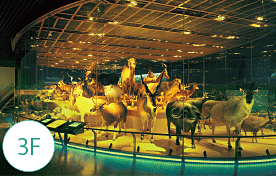Introduction to the Permanent Exhibitions
This is an introduction to the permanent exhibitions of the Global Gallery and Japan Gallery. Descriptions are available in Japanese, English, Chinese and Korean.
Japan Gallery
[Nature of the Japanese Islands]
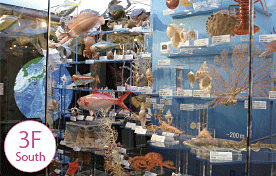
From a geochronological viewpoint, the Japanese Islands underwent rapid fluctuations due to crustal movements, and these led to the formation of complex geological structures and a rich mountainous topography. The Japanese Islands have four distinct seasons and are strongly affected by monsoon and ocean currents. The complex topography and climate of the natural environment has given rise to diverse forms of life.
>>
View information about the exhibits of the South Wing, Japan Gallery, 3F
[History of the Japanese Islands]
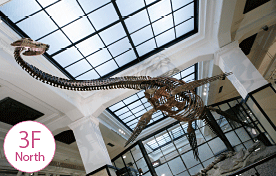
On the Japanese Islands, with their complex and unique geological history, numerous species have repeatedly appeared, flourished, and become extinct. The evidence of these past lives entombed in layers of rock tells of this dynamic and changing history, from the time the Japanese land mass first split away from the continental margin to when it formed an archipelago.
>>
View information about the exhibits of the North Wing, Japan Gallery, 3F
[Organisms of the Japanese Islands]
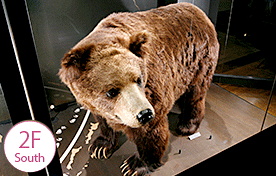
Through the repetition of glacial and interglacial cycles dating back about 1.7million years, the variety of these living organisms migrated from the continent to the Japanese Islands by crossing the strait, which had turned into land during the glacial stage. During the interglacial stage, when they were cut off from the continent by the ocean, these living organisms achieved their unique differentiation as they adapted to the transformation of the natural environment of the Japanese Islands, with its varied climate and complex topography.
>>
View information about the exhibits of the South Wing, Japan Gallery, 2F
[Japanese People and Nature]
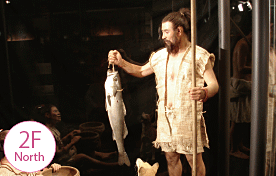
Around 40,000 years ago, our ancestors encountered a land rich in forests and oceans at the eastern edge of Asia, and they began to settle in the Japanese Islands. Thereafter, various other groups of people brought their distinctive cultures to the islands. These peoples came together while still maintaining particular aspects of their culture. Our ancestors skillfully interacted with the natural environment of the Japanese Islands through the invention of pottery, the cultivation of plants and other techniques.
>>
View information about the exhibits of the North Wing, 2F, Japan Gallery
[Techniques in Observing Nature]
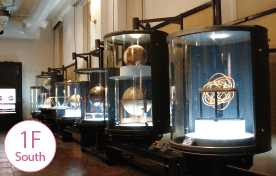
The people of the Japanese Islands have been sensitive in observing the richness and diversity of nature around them since the beginning of their history. Our daily life in harmony with nature has also enabled us to acquire uniqueness in manufacturing and industry. Tools, instruments, crafted objects and literature handed down from their own time to the present, demonstrate our activities in the fields of science and technology.
>>
View information about the exhibits of the South Wing, Japan Gallery, 1F
Global Gallery
[ComPaSS]

This exhibition area is primarily aimed for children, along with their parents or guardians. It is designed to encourage communication as a part of play, and develop their abilities to sense and think. Please check to see if the exhibition area is open before visiting.
>>
About ComPaSS
[Progress in Science and Technology]
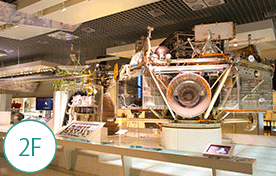
The exhibit showcases some Japanese inventions from the Edo period onwards. Japanese culture maintains its unique identity and its close communion with nature, while at the same time having interaction with foreign cultures.
>>
View information about the exhibits of the Global Gallery, 2F
[Investigation Technology for the Earth]
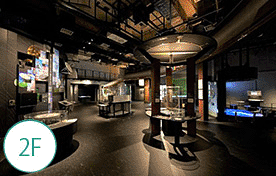
At the Global Environment Detector, images and data showing fluctuations here on Earth are introduced in semi-real-time. There are many interactive displays making it possible to instinctively experience the physics related to light and magnetism, which are the foundation of observation technology.And geomagnetism and magnetic fields are explained through familiar phenomena such as compass.
>>
View information about the exhibits of the Global Gallery, 2F
[Biodiversity – We are All Part of the Same Ecosystem]
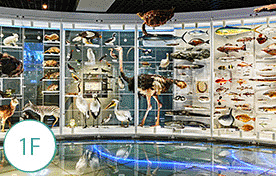
The evolution of life on Earth has produced some 10 million different species. Although all the species share the basic characteristics of living organisms, each species has adapted in form and lifestyle to its own particular environmental circumstances. No species lives in isolation; our lives are intricately interwoven.
>>
View information about the exhibits of the Global Gallery, 1F
[Navigators on the History of Earth]
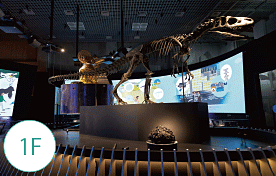
Based on the epic themes "History of the Universe", "History of Life", and "History of Humankind", travel back in time and experience 13.8 billions years of history through specimens, documents, and videos. It is the centerpiece that links the exhibition halls of the Global Gallery.
>>
View information about the exhibits of the Global Gallery, 1F
[Evolution of Life -Exploring the Mysteries of Dinosaur Evolution-]
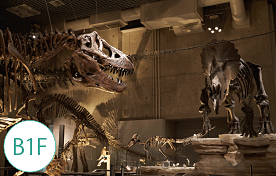
Today, reptiles and birds are quite different animals. Studying dinosaurs however bridges the gap between the two. There are countless mysteries including the origin of dinosaurs, their increase in size, diversification, and their extinction. How much can we learn from the silent testimonies of fossils?
>> View information about the exhibits of the Global Gallery, B1F
[Evolution of life – From the Earth’s Origin through Human Existence]
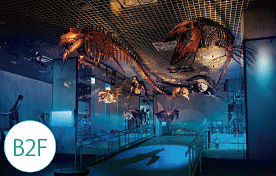
Since their beginnings some four billion years ago, life forms have become increasingly diverse due to the ongoing process of environmental adaptation. Human beings, part of the mammal group have acquired highly developed adaptive capabilities, thanks to superior dexterity and powers of reasoning. This adaptive capacity has enabled humans to extend their reach to all corners of the Earth. In this exhibit, you can trace the evolutionary path and learn how plants and animals have adapted to the changing environment.
>> View information about the exhibits of the Global Gallery, B2F
[Exploring the Structure of Nature
-How our world works-]
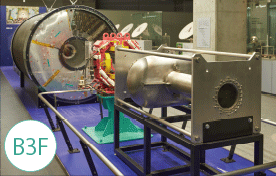
The vast universe, the mystery of life along with its components, and the laws that govern these… Our understanding of these things is the foundation of all scientific recognition. Discoveries that have widened our view and changed our understanding of nature along with the people who contributed to these are introduced.
>> View information about the exhibits of the Global Gallery, B3F
The Flowering of Life, Views of the Earth, Fields of Life and Death (large-scale video presentations, etc.)
The video presentation "The Flowering of Life" and the large-scale video presentation "Views of the Earth", presented on 1F of the Global Gallery, and the large-scale video presentation "Fields of Life and Death", Life, presented on 3F of the Global Gallery, are shown at the following times:
- The Flowering of Life (Global Gallery, 1F)
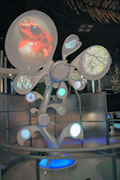
| Starting times (Feature length: 5 min., 15 sec.) |
| 10:00 AM |
10:40 AM |
11:20 AM |
12:00 PM |
12:40 PM |
1:20 PM |
| 2:00 PM |
2:40 PM |
3:20 PM |
4:00 PM |
|
- Large-scale video presentation (Views of the Earth: Global Gallery, 1F)
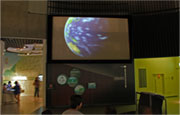
| Starting times (Feature length: Approx. 5 min.) |
| 9:40 AM |
10:20 AM |
11:00 AM |
11:40 AM |
12:20 PM |
| 1:00 PM |
1:40 PM |
2:20 PM |
3:00 PM |
3:40 PM |
| 4:20 PM |
|
- Large-scale video presentation (Fields of Life and Death: Global Gallery, 3F)
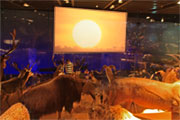
| Starting times (Feature length: Approx. 5 min.) |
| 10:00 AM |
11:00 AM |
12:00 PM |
1:00 PM |
2:00 PM |
| 3:00 PM |
4:00 PM |
|
“Touch and Talk Wagon”
Specimens exhibited at the museum have a variety of stories and secrets. “Touch and Talk Wagon” introduces a specimen or a material related to the theme of the exhibit room to summarize the points for a deeper understanding of the exhibits.
“Touch and Talk Wagon” is offered by a trained volunteer. The program changes periodically, offering various programs for each exhibit room. Please look for them.
>> View information about The “Touch and Talk Wagon”







